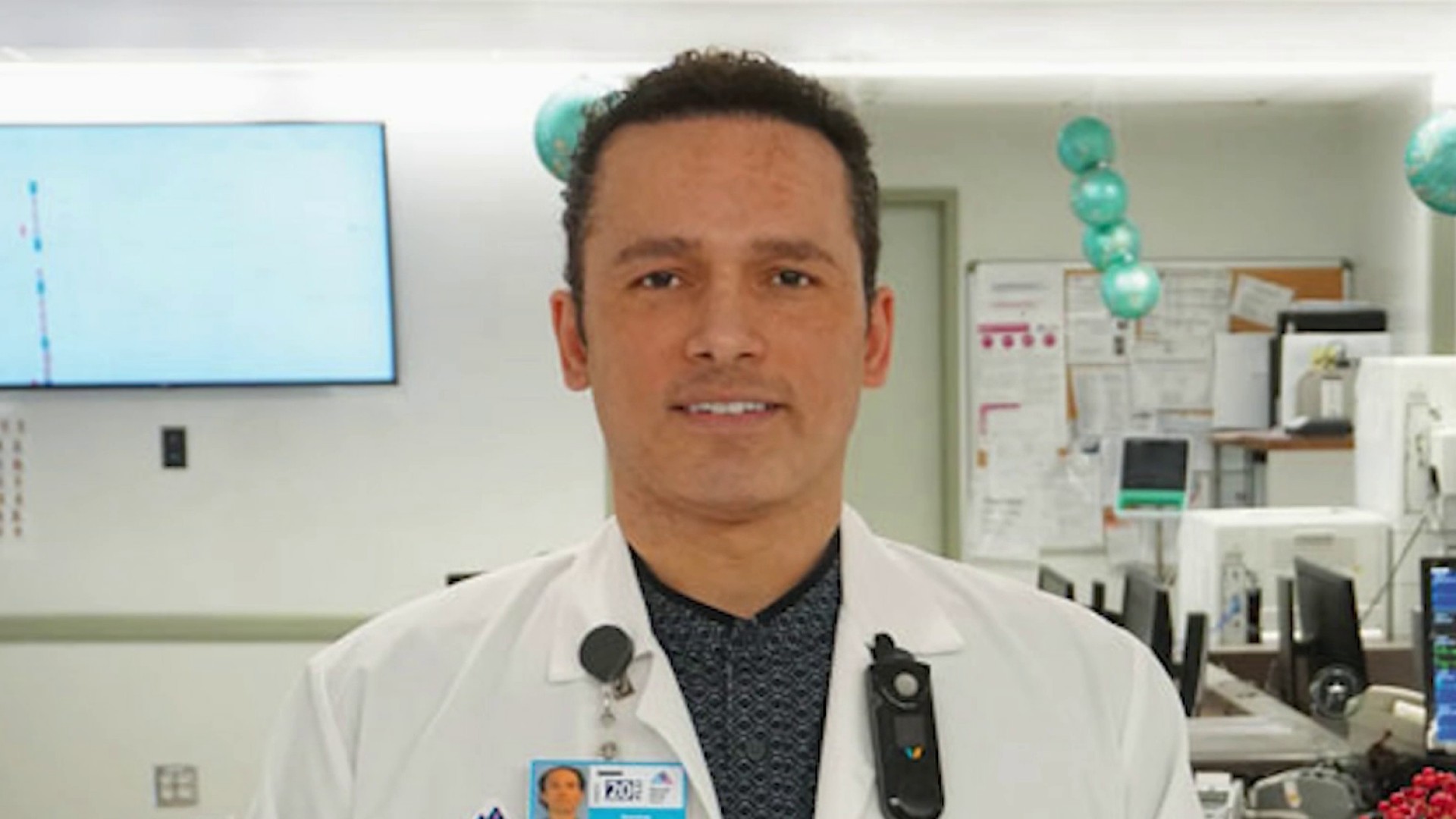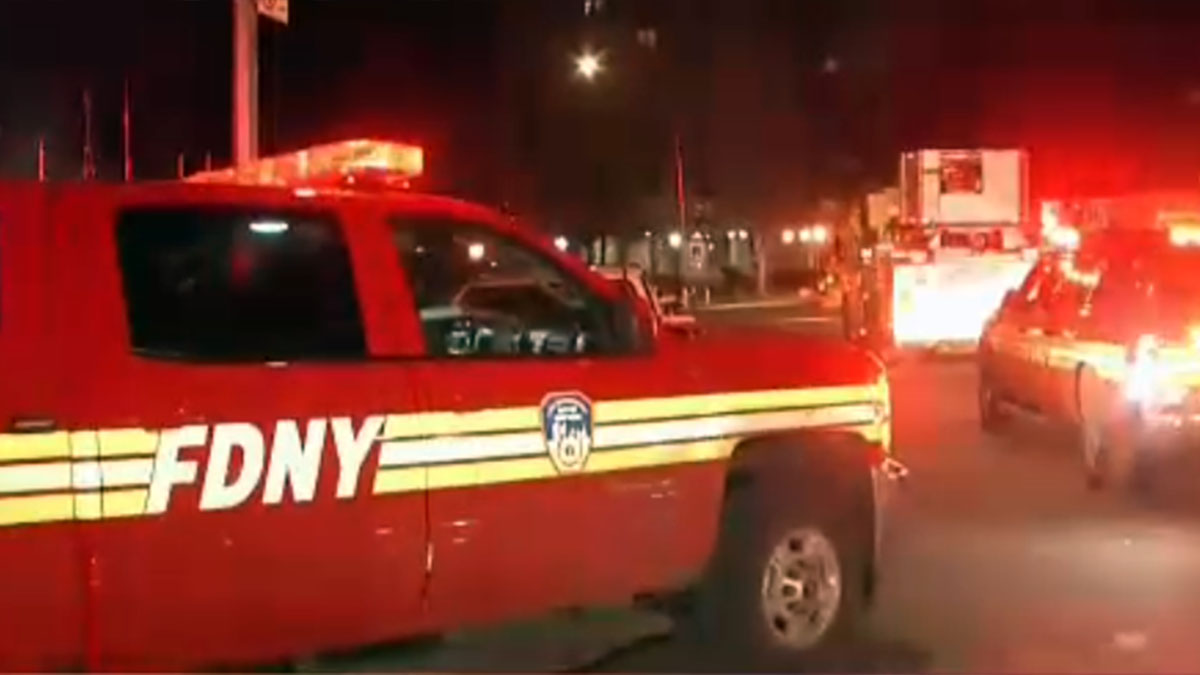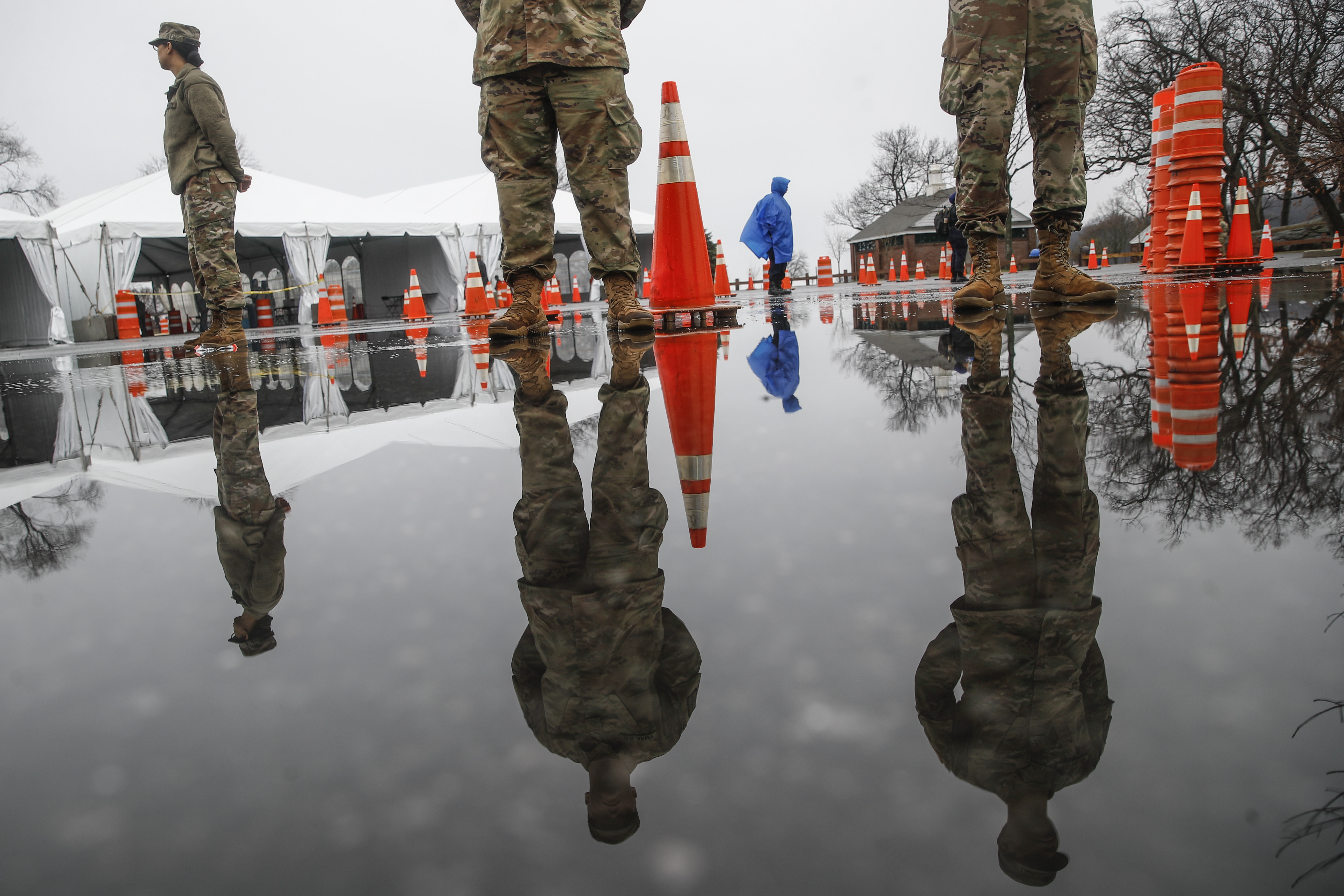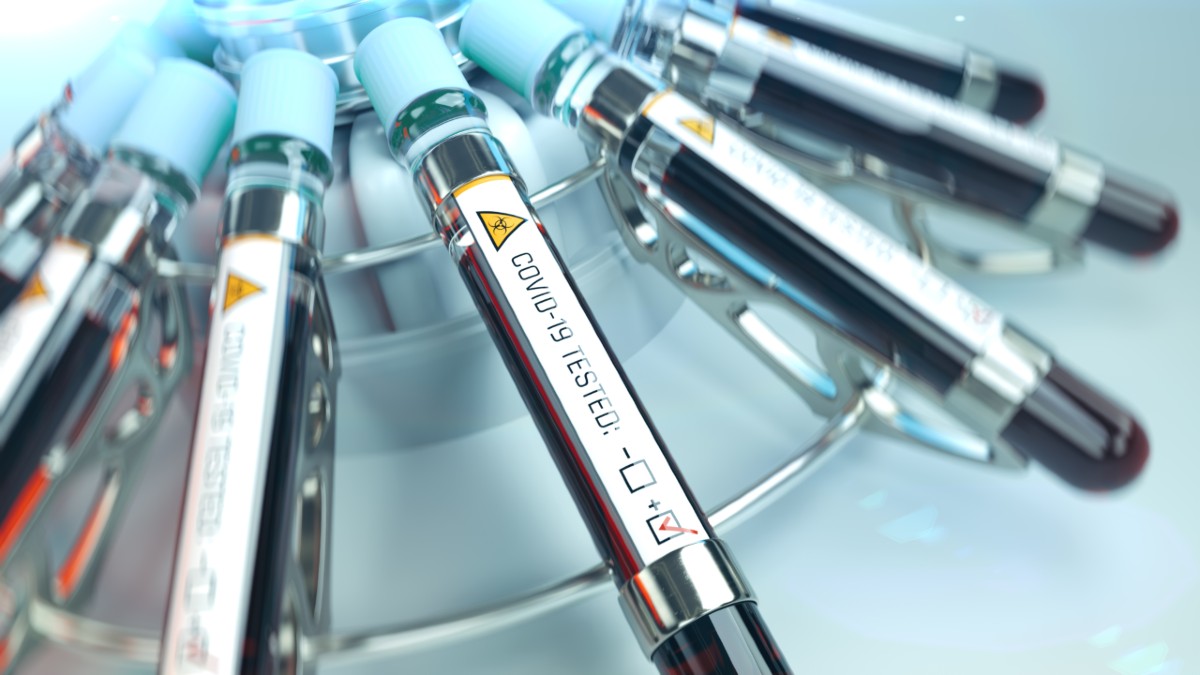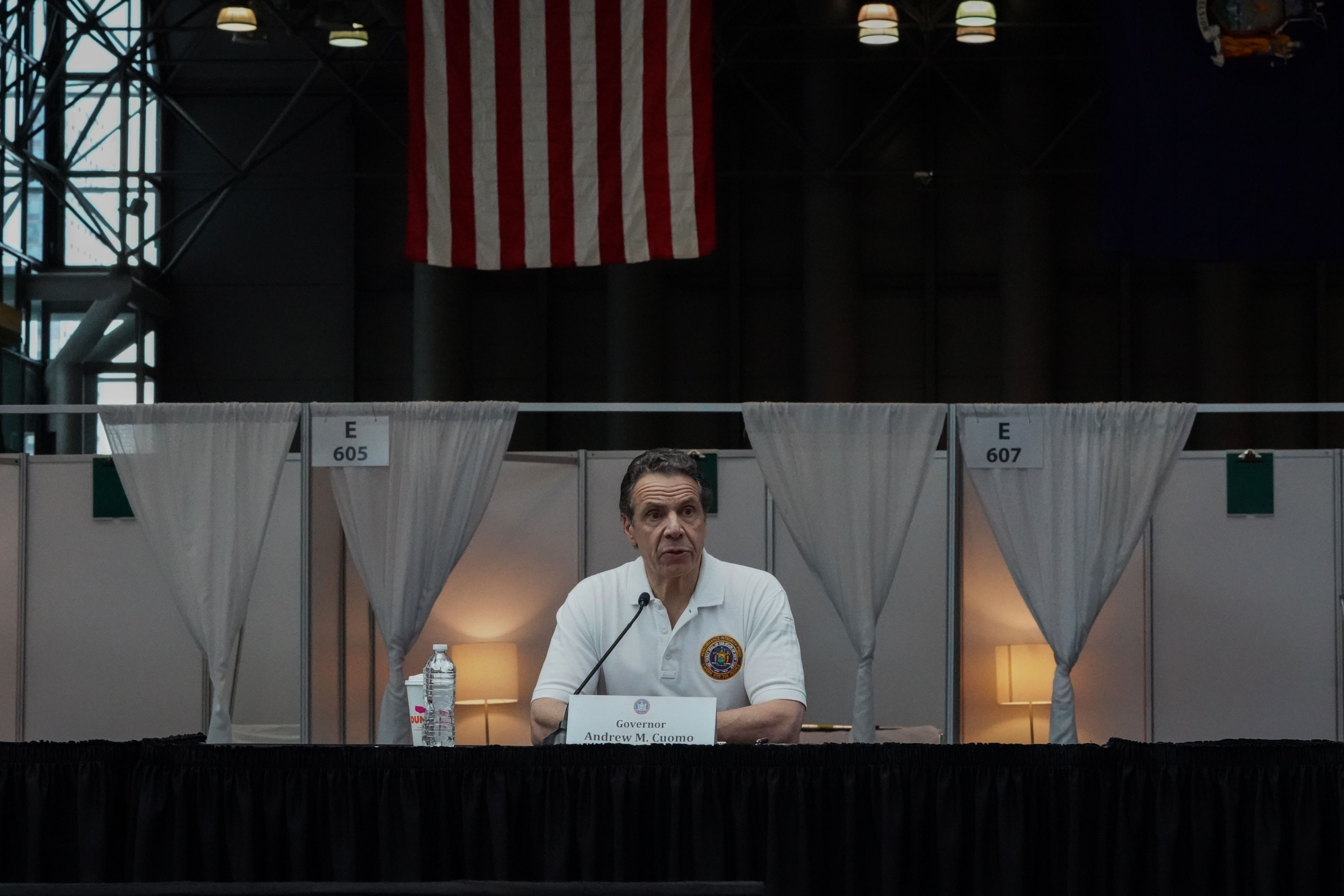What to Know
- The tri-state area has more than 56,000 COVID-19 cases and 738 deaths to date, with New York City accounting for most of the increasing toll; to date, the region has nearly 10 percent of the total cases worldwide
- Right now, New York state has about half of all cases in America; it has 5x more cases than the 2nd hardest-hit state, which is New Jersey
- President Trump has approved major disaster declarations for the two states, which say they are in dire need of funding and life-saving supplies like ventilators
New York continues to see its infection trajectory rise unabated, with cases soaring to nearly 46,000 and deaths surpassing 600 by Friday evening, as Gov. Andrew Cuomo and NYC announced nearly 7,000 new positives by the end of the day.
COVID-19 has, in two weeks, claimed more lives in New York City than homicides did all of last year.
The number of hospitalizations is up 13-fold over the last 10 days, Cuomo said, but the rate of admittances doubling is slowing -- from every two days earlier this week to every four days by Thursday. That, despite the surge in overall numbers, could signal a slowing rate of spread, Cuomo says. But, he acknowledged, the height of the crisis is still ahead -- about 21 days out.
Tracking Coronavirus in Tri-State
"This doesn't attack the strong among us. It attacks the weak among us, the people we're supposed to protect," Cuomo said Friday. "These are our parents, our aunts and uncles, a relative who is sick. Every instinct says protect them, they need us. But those are the exact people this enemy attacks."
As of Friday night, New York had a total of 45,934 cases and 603 deaths, officials said; about 14.5 percent of the total cases required hospitalization, and of those, nearly a quarter were in intensive care. The city, impaired by the density that makes it one of the world's most vibrant places, bears the brunt of the impact, with over 26,600 cases across the five boroughs. About 20 percent, slightly higher than the state average, have required hospitalization.
The city death toll, meanwhile, soared to 450 Friday night, the mayor's office said — that's almost a third of the total fatalities nationwide, by NBC News estimates. While most NYC cases are people younger than 50, three-quarters of the fatalities are people 75 and older. All but 3 percent of those who have died have had underlying conditions. The dead include people on the front lines of the crisis; a Mount Sinai nursing manager who passed away Tuesday was in his 40s.
New York remains far and away the most impacted state in America with a case count five times higher than the second most afflicted state, New Jersey. Deaths are spiking in the Garden State, too. Previously, the highest single-day increase was 19 -- that was a day ago. On Friday, Murphy added another 27 souls to the now 108 total. He also reported nearly 2,000 more confirmed cases.
Connecticut, with the smallest number of cases in the tri-state, has nearly 1,300 cases and 27 deaths — both of which are still more than a vast majority of other states.
Coronavirus Latest
In an increasing number of cases, loved ones don't get a chance to say goodbye.
"Too many people are dying alone," New York City emergency room physician Dr. Kamini Doobay told the AP. "It’s been incredibly painful to see the suffering of family members who I call from the ICU, hearing the tears, crying with them on the phone. It's one of the most horrific things."
The signs of strain are everywhere: Lines of people to get tested stretching around city blocks before sunrise, including at Elmhurst Hospital, which reported 13 fatalities in a single day; doctors describing their ERs as "apocalyptic;" adult children begging to see their parents in nursing homes; healthcare workers treating patients for hours on end, venting their desperation and fear on social media.
Some have called coronavirus "the humanitarian mission of our lifetimes." Others have described it as "the greatest humanitarian crisis in a century."
One doctor told NBC News that "Every time I leave from a shift, I cry. Each shift. Every shift I work I have cried after leaving...because of the pain and suffering we see and the amount of exposure that myself and my nurses as well as my doctors (experience)."
Cuomo and New York City Mayor Bill de Blasio say they have enough supplies to get hospitals what they need right now. But they literally mean "right now" -- and "right now" gets more taxing with each day. Still, Cuomo says, we will get through this together -- and he drove the point home in emotional tribute at the Javits Center Friday.
"You are living a moment in history. This is a moment that is going to change this nation. This is a moment that forges character, forges people, changes people," Cuomo said. "Ten years from now you will be talking to your children, your grandchildren and you will shed a tear because you will remember the lives lost, the faces, the names. You will remember how hard we worked and we still lost loved ones. But you will also be proud. You will be proud that you showed up."
At a press conference later in the day, de Blasio said the "crucial date" right now is April 5: That's when the city could potentially run out of the necessary medical supplies to treat COVID-19 patients.
"We have what we need for next week. But after (April 5) is when I get very, very worried," de Blasio said. "That is a decisive moment for the City of New York."
Hunt for Hospital Beds -- and Ventilators
New York state has a new goal — to get 1,000-plus bed overflow facilities in all five boroughs as well as in Westchester, Suffolk, Nassau and Rockland counties, Cuomo said Thursday. The state is also working to shift some patient load from overwhelmed downstate hospitals to upstate facilities, he said. De Blasio, meanwhile, is working within his administration to triple NYC bed capacity.
The Javits Center operation -- the 1,000-bed project developed by the state and the four 250-bed FEMA-run and staffed areas -- will be fully operational by Monday, Cuomo said Friday. As he told personnel, "You built a hospital in a week." The Manhattan center will house non COVID-19 patients to help take some of the non-viral crowd off the shoulders of hospitals.
Cuomo is looking into four new potential sites for temporary hospitals as well: Brooklyn Cruise Terminal, the Aqueduct Racetrack facility in Queens, CUNY Staten Island, and the NY Expo Center in the Bronx. Each would have 1,000 beds. Cuomo said he would ask Trump to authorize the plan later Friday. The governor said Friday he was suspending all non-essential construction in the state, though declined to give specifics. Presumably, work on hospital infrastructure continues.
There are a number of FEMA-run field hospitals going up in New Jersey as well, including one at the sprawling Meadowlands complex just across the river.
Cuomo said Thursday the facts are such that "almost any scenario that is realistic will overwhelm the current capacity of the health care system."
Coronavirus Latest
The latest battlefront is ventilators. Thousands of people with COVID-19 are sick enough that they need ventilators to help them breathe — in some cases, Cuomo said, for 20 days or more. But New York alone is more than 18,000 units short of what it expects to need at the peak of the crisis. To claims, including by Trump, that Cuomo is overestimating the number of ventilators the state will need, the governor said Friday he hopes the doubters are right, but for now he's just going by facts.
The head of surgery at New York Presbyterian said that the number of patients on ventilators at the hospital has "more than doubled over the past three days," a faster pace than the overall increase in new cases. The center says it is at risk should the current pace continue. In Hoboken, a chief hospital executive says her staff now check inventory twice daily and fear they may run out of key equipment, especially ventilators, by next week.
De Blasio said he supports Cuomo's call to get 30,000 ventilators for the state, with the city in need of many as well. The mayor said that because New York is getting the virus first, the state would send the ventilators where they need to be as the virus is likely to spread elsewhere.
Hospitals struggling to stay afloat will get more relief, as will many others. On Friday, the U.S. House of Representatives passed and President Trump signed the historic $2.2 trillion coronavirus relief bill, a package that promises to infuse business, state and city governments and individuals with direct cash and immediate support. Checks could be flowing within three weeks.
Desperate Times
Trump wants to have the economy "raring to go" by Easter -- a concept de Blasio has blasted as "literally inconceivable" for his city, the epicenter of the national outbreak. Murphy said it won't work for New Jersey either; he said nothing would make him happier than reviving the economy but doing so too soon would be akin to throwing gasoline on an already raging fire.
Initial unemployment claims nationwide hit 3.28 million Thursday, nearly five times the previous all-time record. De Blasio predicts that as many as half a million city residents either have lost or will lose their jobs due to the outbreak.
The demand for medical personnel, on the other hand, is far outpacing the supply -- so much so that New York, New Jersey and Connecticut have all called on retirees to return to work and help answer the call. Cuomo says 62,000 people from physicians to RNs to respiratory therapists have responded to date. Mental health professionals, thousands of them so far and more daily, have also signed up to field calls via the state's new hotline. On the other side of the spectrum, NYU says it will graduate its medical students early to help shoulder the load.
In New York City, hospital staffs have been moved around in an effort to address shortages at different locations. More than 60 clinicians (including RNs, nurse practitioners, physicians and physician assistants) have been sent to help with the influx of patients at Elmhurst Hospital, along with 40 ventilators. On Saturday, more than 100 additional nurses will be reassigned to the fatigued hospital.
Private companies are stepping to the plate, donating millions of masks and thousands of bottles of hand sanitizer. JetBlue is flying volunteer medical workers to New York state for free. At least one hotel -- the Four Seasons in New York City -- has opened its rooms to healthcare workers free of charge, while Hertz is offering free vehicle rentals to healthcare workers. The Brooklyn Navy Yard has turned into a "wartime factory," as de Blasio describes it, with two companies shipping tens of thousands of newly made medical face shields to first responders out of a warehouse that didn't even exist before the crisis.
New York City has been providing childcare for essential workers and New Jersey has ordered all daycare centers to solely care for children of those key personnel as well. If not, they must close by April 1. As for when schools will reopen, that remains very much up in the air. Cuomo said Friday New York schools will stay closed at least for another two weeks, but if the current numbers increase continues, they'll be closed for longer. Murphy says he won't even reconsider the matter in New Jersey until April 17. He said Friday he doesn't envision a scenario where the current restrictions would be lifted prior to May, a premise de Blasio put forward earlier in the day as it relates to New York City.
More Testing, More Cases
Numbers will continue to rise as more people are tested, officials have said. New York has accounted for 25 percent of all COVID-19 testing in America to date, Cuomo said Thursday. That is an accomplishment, he noted: Find the cases, isolate the positives and treat them. That, in conjunction with the social distancing and economic measures in place, will curb the spread of infection.
New Jersey and Connecticut have both seen their totals rise as well, standing at 8,825 and 1,012, respectively, as of last reporting. Their death tolls have also spiked (108 in NJ, 21 in CT). Regionally, the tri-state area has 56,050 COVID-19 cases; at least 738 people have died.
As Murphy said Friday, "The fact that we have among – if not the – the highest positivity rates is a good thing, and shows we are using our limited resources to their highest and best use."
Governors are working to accelerate action on the drug front as well. New York launched a clinical trial for an experimental treatment Tuesday and plans to be the nation's first state to try to heal critically ill patients using recovered people's plasma — a process called convalescent plasma that was used during the flu epidemic of 1918. Right now, everything is on the table.
Responding to the Crisis
Where Do We Go From Here?
The depths of the outbreak — and its impact — are incomprehensible at this point but most definitely catastrophic: Billions upon billions of dollars have been lost and more will be lost; many have died, far more have been sickened. The grim totals will rise — and it may be months before we see the curve flatten out.
The World Health Organization declared the novel coronavirus a pandemic, the first coronavirus to ever earn the dubious distinction. It's novel — that means it's new and no one has immunity to it.
Nationally, NBC News estimates more than 101,000 have been infected with the novel coronavirus and at least 1,500 people have died - a mortality rate of about 1.5 percent. By way of comparison, the CDC says in the 2018-2019 flu season, about 0.1 percent of those infected ultimately died.
The numbers are far more stark globally. WHO offered a somber outlook in a recent situation paper: It took three months to get to the first 100,000 cases. It took 12 days to get to the next 100,000, and just five days to get the next 100,000 after that.
On Thursday, the U.S. overtook China in countries with the highest number of confirmed COVID-19 cases, according to the Johns Hopkins University of Medicine. Just a day later, it became the first country in the world to have more than 100,000 cases.



